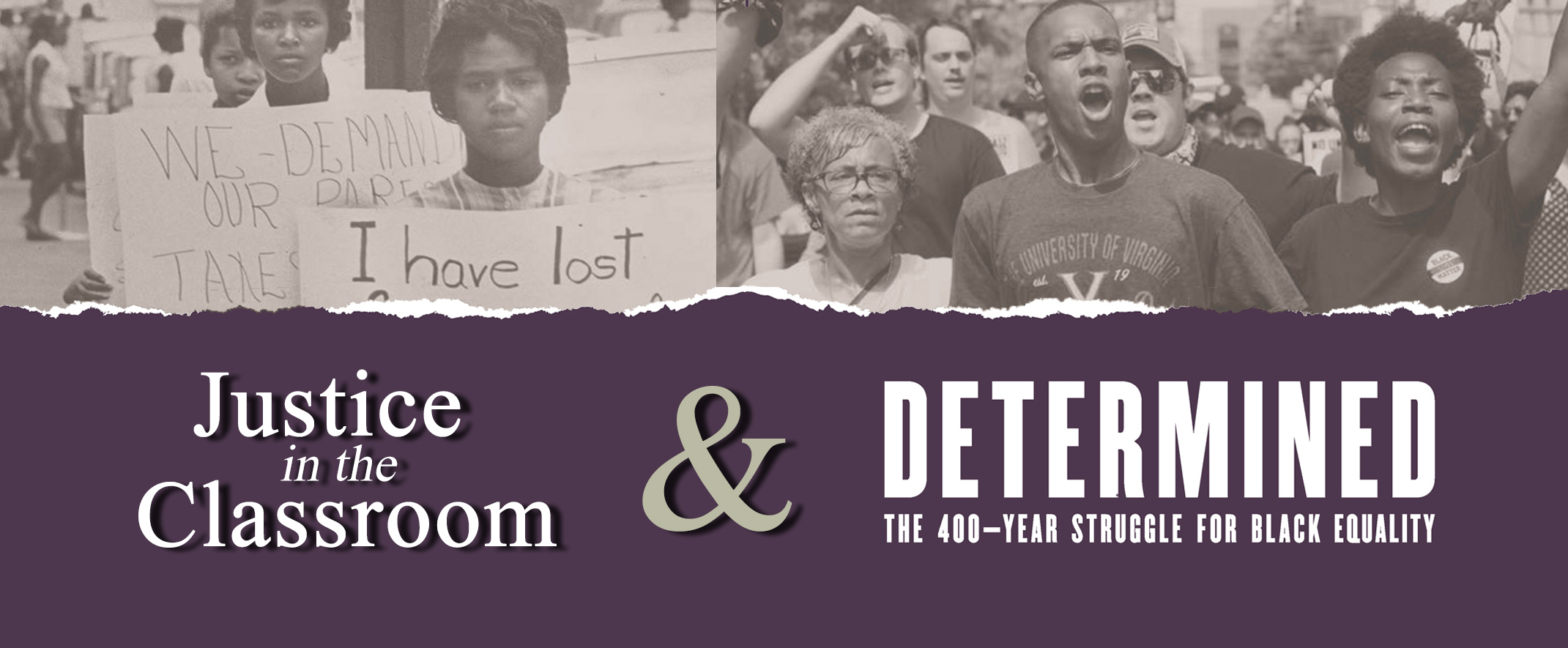Middle School Chapter 4:
Mary S. Peake & Barbara Johns: A Fight For Academic Equality
Introduction
Throughout the four centuries of history covered in Determined, access to education was at the heart of the African American struggle for equality. While slavery was legal, enslaved Americans were prohibited by law from being taught to read and write, and had no access to formal education. Following emancipation and the 13th Amendment, Black Americans temporarily enjoyed increased access to education, but those rights quickly evaporated under new Jim Crow laws.
Under those provisions, Virginia and other southern states established “separate but equal” schools that segregated students by race, which resulted in unequal conditions for Black and White children. Despite these setbacks, African Americans continued to aggressively pursue their right to an education.
Standards
Virginia
- USI.9 The student will apply social science skills to understand the causes, major events, and effects of the Civil War by:
- b) explaining how the issues of states’ rights and slavery increased sectional tensions
- f) describing the effects of war from the perspectives of Union and Confederate soldiers (including African American soldiers), women, and enslaved African Americans
- VUS.13 The student will apply social science skills to understand the social, political, and cultural movements and changes in the United States during the second half of the twentieth century by:
- b) evaluating and explaining the impact of the Brown v. Board of Education decision, the roles of Thurgood Marshall and Oliver W. Hill, Sr., and how Virginia responded to the decision
National
- NSS-USH.5-12.5 Era 5: Civil War And Reconstruction (1850-1877)
- NSS-USH.5-12.9 Era 9: Postwar United States (1945 to early 1970s)
Key Hook/Question
What academic challenges and successes did Mary S. Peake and Barbara Johns experience throughout their lives?
Downloads
The slideshow below can be used in this browser-based format, or downloaded as a presentation or PDF outline. You may also use the button below to make a Google Slides copy in order to adapt or edit the presentation.
Suggestions for Adaptations
All of our lesson plans are designed to be adaptable to your needs. After downloading a copy of these Google Slides, feel free to rearrange their order, pick and choose elements that work best for your students, or add content to supplement an area to which you’d like to add extra emphasis.
Additionally, our activities can be uploaded to any platform (such as Google Classroom) and shared with students directly so that they can complete the activity individually on their own devices. You can also project the lesson plan and have students look on as an entire class as you lead them through it.
- This lesson could be introduced with a specific conversation on resistance and what that term means. Slide 10 (and others) could be taken out and formatted to create a “gallery walk” discussion, where you print out the images and place them on your walls to allow students to walk around and make observations about what they see.
- Students could examine selected slides (such as slide 12) to complete the primary source activities within them, and then compare results with another group.
- This lesson can be broken into chunks for small group work, and then students can gather afterwards for a large class discussion. For example: students can complete slides 6-8 in small groups and regroup to discuss as a class before completing slide 9 as a formative assessment.
- Student groups could also focus on one clue (such as slides 6-9) and present their findings to the class. This could help minimize time restraints and address student needs.
- Student groups could also focus on one primary source (such as slide 8) and present their findings to the class. This could help minimize time restraints and address student needs.
- SOL suggestions:
- Teachers can highlight and review key vocabulary terms and concepts that are important for the SOL. For example: as you work through the activity, you could discuss “separate but equal,” sit ins, walk outs, the NAACP, Brown v. Board of Education, and other topics.
- If short on time, teachers could focus on the Barbara Johns section rather than the entire presentation.





